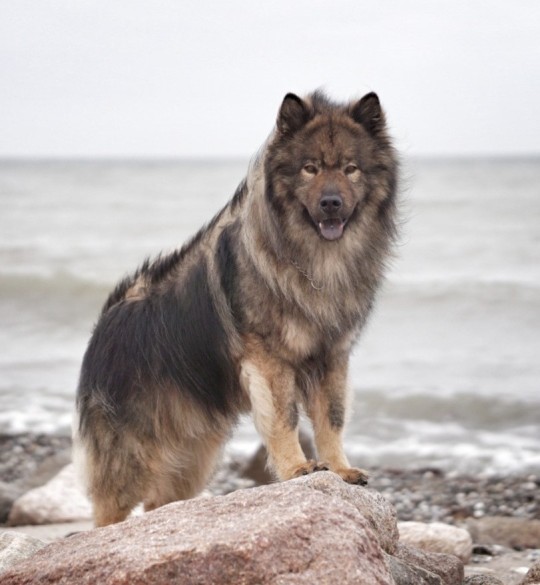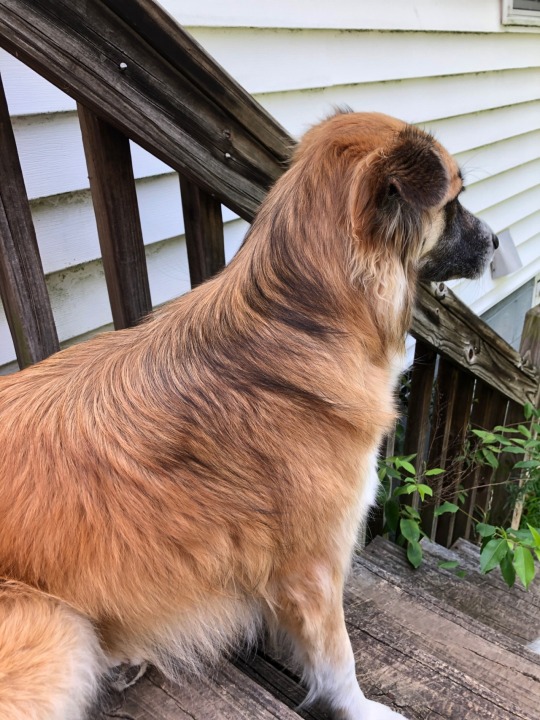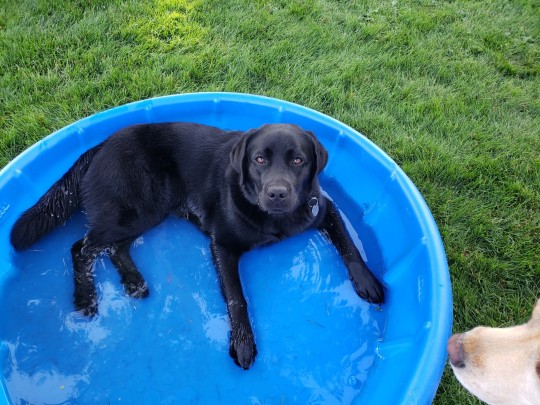#black saddle is another expression of the Black and Tan gene but Black and Tan is only really found in alpine dingo populations
Text
Basic dog color genetics
Okay, so I really love dog color genetics and wanted to make a post explaining them because there’s so much cool stuff going on.
Most of my info will be coming from the DogGenetics website, along with the Facebook group Dog Coat Color Genetics, and the UCDavis website.
I’ll be assuming a basic understanding of Mendelian genetics, if you don’t know about Punnett squares there are tons of great resources around the internet, and the DogGenetics site has a great beginner article.
I will not be using breed-specific terms, just generic ones. There are simply too many breed terms to define and explain. Also, they are confusing, since GSD people call agouti "sable".


Above left: Loki, @lokivonkrusenbusch eurasier Loki. He is Agouti.
Above right: Maki, my mixed-breed dog, is a shaded sable.
These are the basics, I’ll be making a new post for each locus later on!
Before we get to the actual colors: Dogs have two pigments, Eumelanin and Phaeomelanin. While each can be modified to different shades, the default for eumelanin is black and phaeomelanin is red. I’ll call them Black and Red pigment for ease of reading, but be aware they can be modified. White is a lack of pigment.
A Locus is a gene location, which has several alleles that have different outcomes. Basic genes have two but some have many more. Loci is the plural of Locus.
Dog coat colors work in layers, so I’ll go from the top down.
C locus: (not named): albinism and color point. This locus affects the color expression and whether the entire dog is white or color point.
S locus (S/s/others): white spotting. This goes on top of everything else. Determines how much white is on the dog.
T locus (T, Tr, t): ticking and roan. This determines whether white areas will have ticking.
E locus (E/Em/Eg/Eh/Ea/e): masking/grizzle/recessive red. This layer determines whether or not the black pigment shows, and if so, where.
K locus (KB/Kbr/Ky): black/brindle/patterned. This layer also determines where black pigment shows up, after the E locus. Brindle dogs will be striped on the Red pigmented areas, as determined by the A locus. Seal is involved here somewhere. It makes the black pigment on a dominant black less opaque so that the A locus will show through.
A locus (ASIPdy, ASIPsy, ASIPag, ASIPbs, ASIPbb1, ASIPbb2, ASIPbb3, ASIPa): sable, agouti, tan point, saddle tan, and recessive black. This determines which areas of the dog will have black hair and whether the hairs will change which pigment they produce over time.
The following Locii modify existing layers:
I series: (I, i, potentially more): intensity. This gene controls the richness of the red color exposed by the E locus.
D locus (D/d): blue/grey. This layer changes the black to grey.
B locus (B/b): brown/liver. This layer changes the black to liver, different shades depending on the specific allele. Cocoa is another allele that does basically the same thing. A dog can be both grey and liver, also known as Lilac.
G locus (G,g): progressive grey. This gene causes some breeds to slowly fade the Black pigment to grey.
M Locus (M, Mh, Mc,m and more): merle. This determines if the dog has merle fur and how strong it is.
H locus (H,h): harlequin. This is a modifier of merle that only exists in Great Danes, it turns merle into black patches.
These genes all come together to "build" the color of the dog. They can be as simple as a black lab or as complex as a sighthound with grizzle, lilac, progressive greying, and brindle. These can combine in surprising ways to make all sorts of interesting colors.


Above left: Ponzu, @intriga-hounds silken windhound. She's brindle with visible white.
Above right: Tilly, @teacup-labrador 's labrador retriever. She's a solid black dog.
#dog#dogblr#dog genetics#color genetics#theres so much more to cover but this takes a lot of research#thank you to dog friends for letting me borrow pics#next i work on showing you what every one of these looks like
166 notes
·
View notes